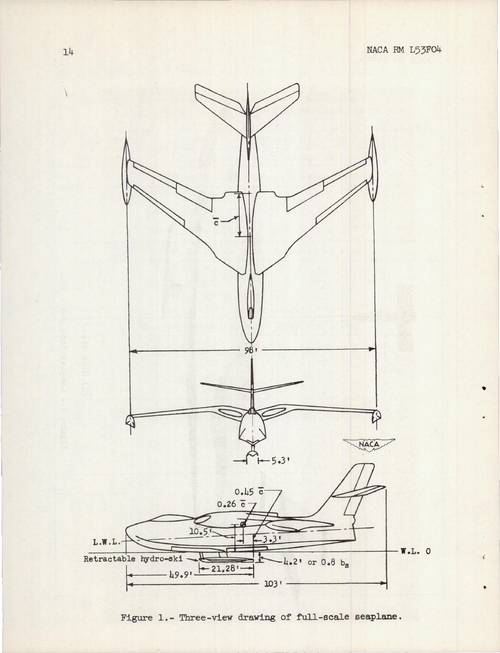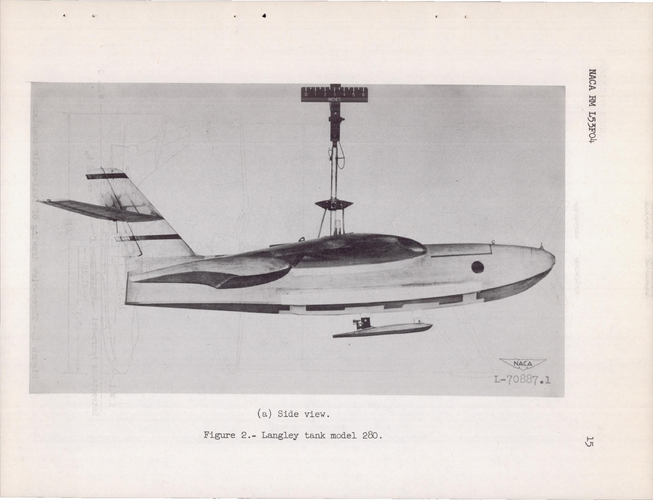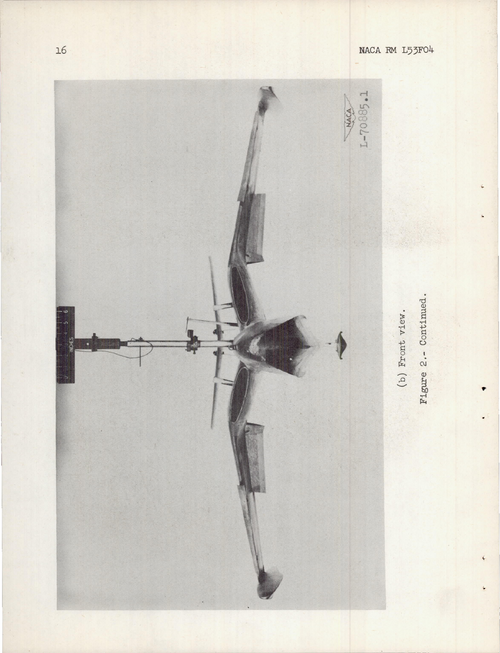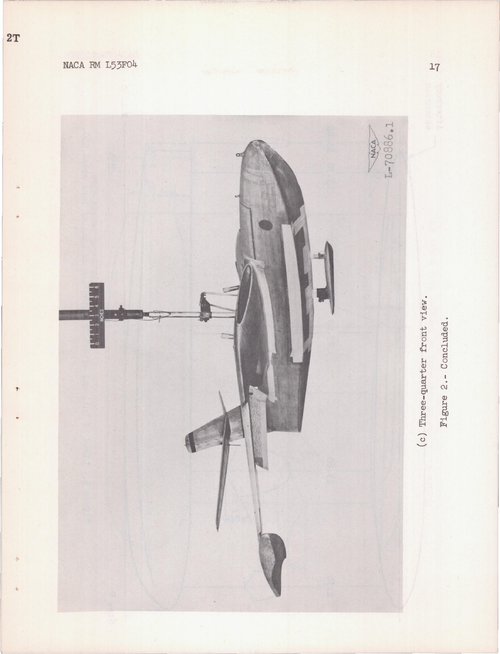- Joined
- 26 May 2006
- Messages
- 34,922
- Reaction score
- 15,794
Aerodynamic and hydrodynamic tests have been made of a 500,000- pound high-subsonic multijet logistics transport seaplane design conforming to the transonic area rule. The aerodynamic results show that acceptable stability and performance characteristics can be obtained on a high-subsonic-speed flying boat. Reasonable lift-drag ratios can be obtained up to Mach numbers of about 0.90. Additional improvements in lift-drag ratio and longitudinal stability characteristics can be obtained by small refinements in the area distribution. The hydrodynamic behavior of this design was determined to be generally satisfactory. Preliminary tests indicated that afterbody suction forces introduced some longitudinal take-off instability and high-speed resistance great enough to preclude take-off without afterburning. How-ever, the addition of a small auxiliary step to the afterbody slightly of the main step improved the stability and reduced the resistance to the point where satisfactory take-offs could be made without afterburning.
Triton said:Martin Model 307 SeaMistress
Kapryan, Walter J. et al.Aerodynamic and Hydrodynamic Characteristics of a Model of a 500,000-Pound High-Subsonic Multijet Logistics Transport Seaplane April 196
Stargazer2006 said:Finally I found the Martin Model number for the Seamistress transport project, which was missing in the official listing from the Glenn H. Martin Museum. It was the Martin Model 307, as found in the book Attack from the Sea — A History of the U.S. Navy's Seaplane Striking Force by William F. Trimble (Naval Institute Press, 2005).
For what, pray tell?The United States and it's allies could well use the SeaMistress right around now.
To where? You write that it would be useful now. Could you give an example where one would be preferable to current large land based cargo aircraft or COD aircraft?
To where? You write that it would be useful now. Could you give an example where one would be preferable to current large land based cargo aircraft or COD aircraft?
Intercoastal transport in the Continental United States for urgently needed supplies and personnel. Transoceanic transport for same as well.
What does "stretched" mean - that there's little excess capacity? Another way to phrase that is "supply is well matched to demand". Global civilian air & sea cargo capacity is at an all time high and if shipping capacity were a significant constraint on trade, there's no reason more ships couldn't be built (shipyard capacity isn't stretched) and more 747s hauled out of desert storage for cargo conversion (or new ones built - I think Boeing is currently cranking them out at less than 1 per month). If "what's left of it" refers to the US-registered fleet, that's a different point and is mostly a matter of legislation.Civilian air & sea cargo capacity, or what's left of it, is pretty severely stretched at the moment. Also, the USAF airlift fleet, and military airlift in general, was cut back during the Obama administration because it was assumed that civilian contractors would be able to take up the slack. That proved a bit optimistic even then. Not to mention even before that, airlift capability had never quite recovered from the 'Peace Dividend' years, not even during the relatively free spending days of the 'War On Terror' (most of the available funding was poured into such things as 'Transformation' and 'Nation Building').
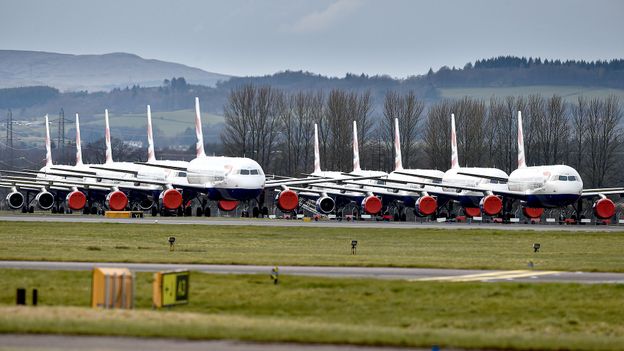
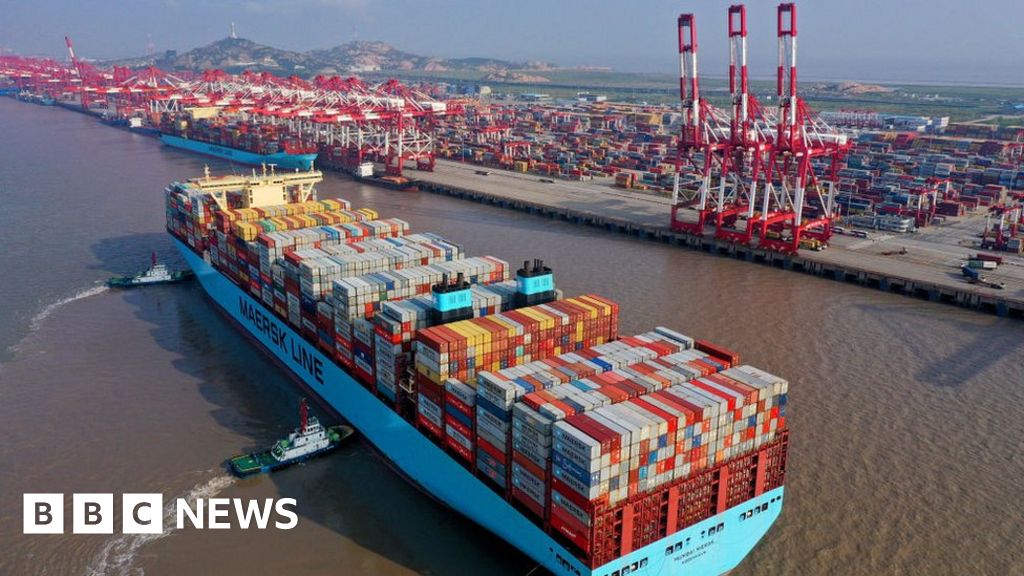
Aren't most major airports on the coasts on or very near bodies of water already? SFO, JFK, SEATAC, Dulles, Boston Logan, to name a few. Is the Mistress to pull out of the water onto a taxiway at one of these? Where's the advantage over conventional aircraft?Intercoastal transport in the Continental United States for urgently needed supplies and personnel. Transoceanic transport for same as well.
Maybe islands, or smaller or more remote towns and cities? Places that don't have large airports, but have seasides or big enough lakes with docks the aircraft can pull up to? That kind of thing is part of the remit for the US2 in Japan.Aren't most major airports on the coasts on or very near bodies of water already? SFO, JFK, SEATAC, Dulles, Boston Logan, to name a few. Is the Mistress to pull out of the water onto a taxiway at one of these? Where's the advantage over conventional aircraft?Intercoastal transport in the Continental United States for urgently needed supplies and personnel. Transoceanic transport for same as well.
Avic AG600. They're making a fleet of them. Still in pre-production testing, but should be certified and in production in the next couple of years. Of course it is only a bit over 20% the weight, but It's a bit bigger than the ShinMaywa S-2. The only thing bigger is the Berieve A-40/Be-42, which is still "in development" after some 40 years. But Russia may be deploying some soon. Of course they also said that 10 years ago.Mainland China would love to fly a fleet of Martin Sea Mistresses to supply all their “islands” in the South China Sea.
Many of those “islands” are only dry during low tide and too short to build runways.
I really think you're misunderstanding the problem. Both articles are pointing to a lack of demand for shipping, in fact there is currently a massive surplus of capacity for both sea and air shipping. The breakdown in JIT supply chains isn't due to transportation problems but supply disruptions, mostly in Chinese factories that were closed or running well below capacity during their shutdown, and demand collapses, where final assembly or sales locations are closed in (mostly Western) consumer economies.
Aren't most major airports on the coasts on or very near bodies of water already? SFO, JFK, SEATAC, Dulles, Boston Logan, to name a few. Is the Mistress to pull out of the water onto a taxiway at one of these? Where's the advantage over conventional aircraft?
What are the dimensions of the "Sea Mistress"?
Take ONE GUESSS where that diagram came from, and where you can obtain a higher rez version of it...
Thank you, already bought.What are the dimensions of the "Sea Mistress"?
See here:
http://www.aerospaceprojectsreview.com/ev2n5.htm
Includes diagrams.

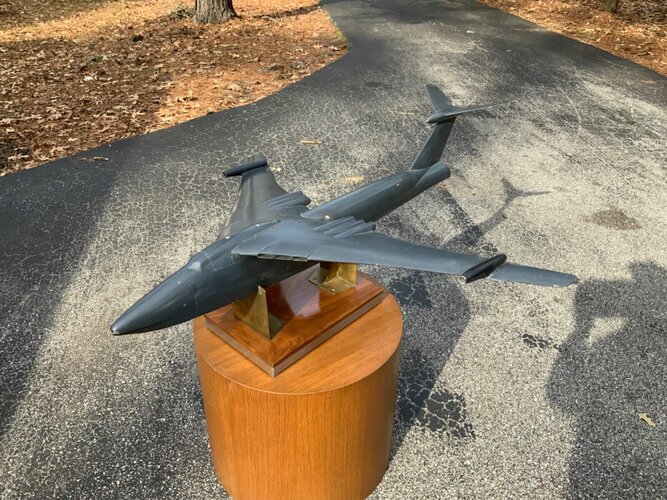
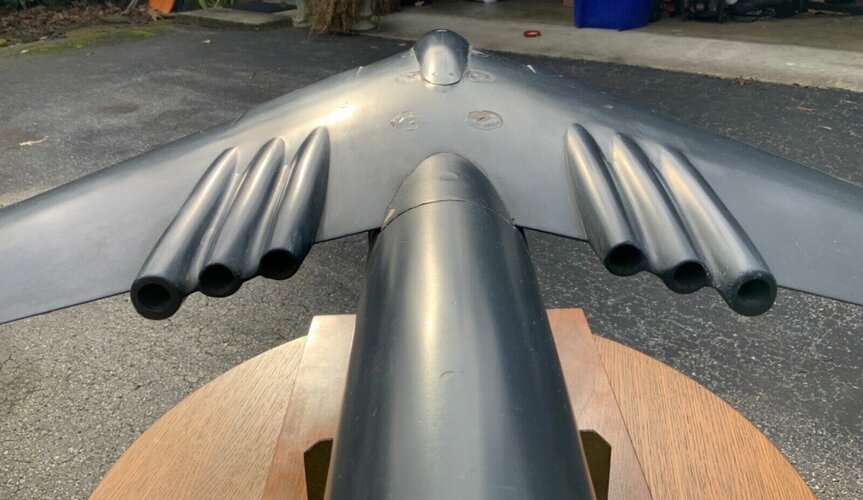
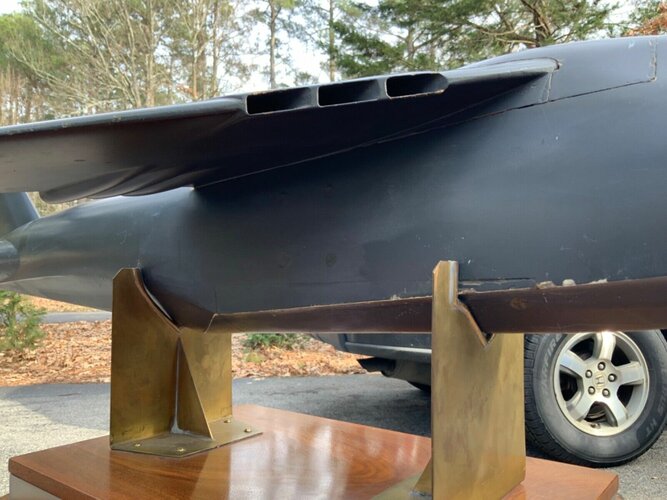
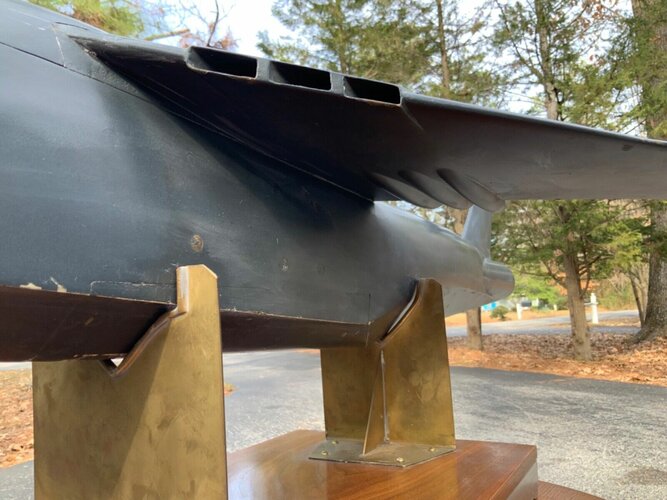
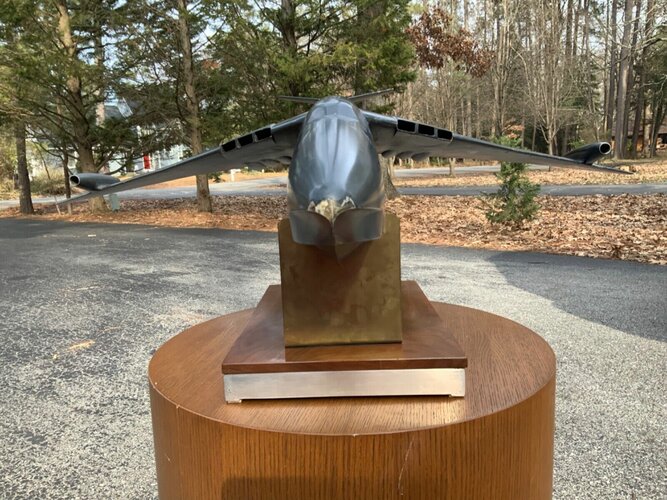
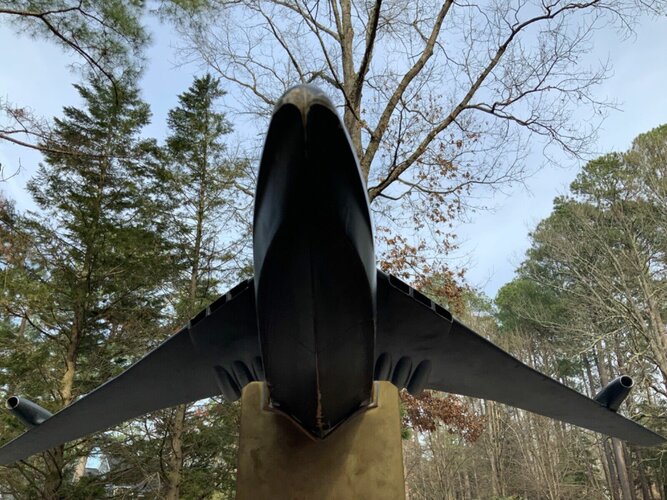
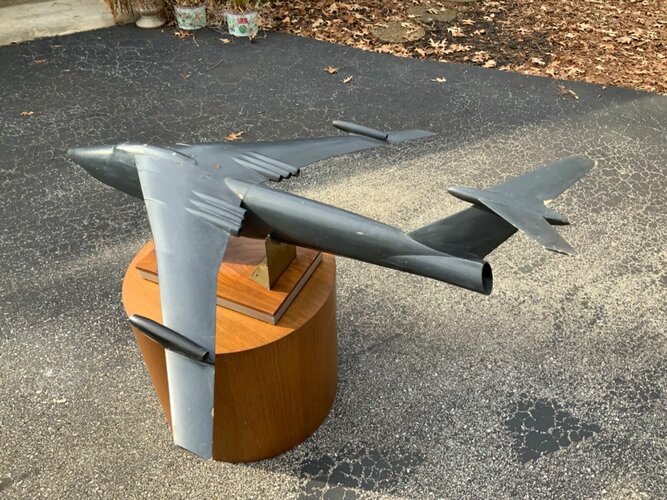
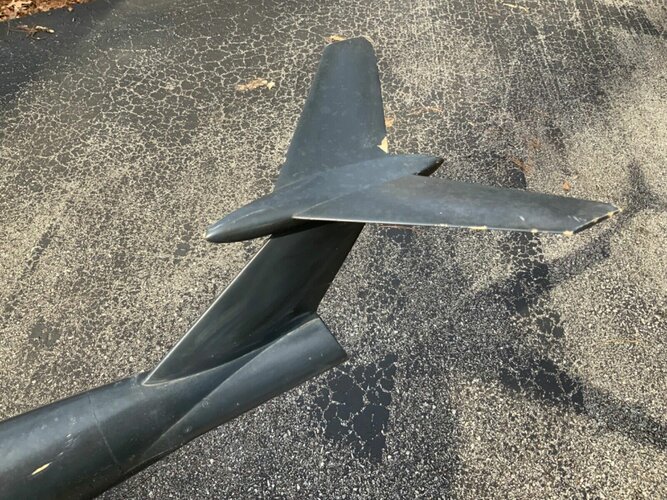
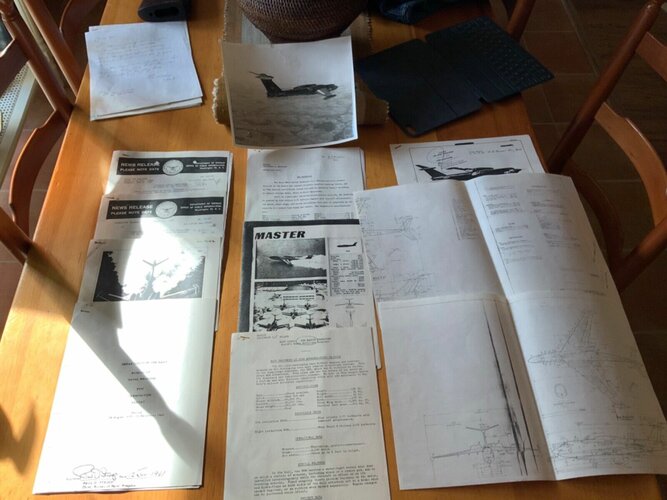
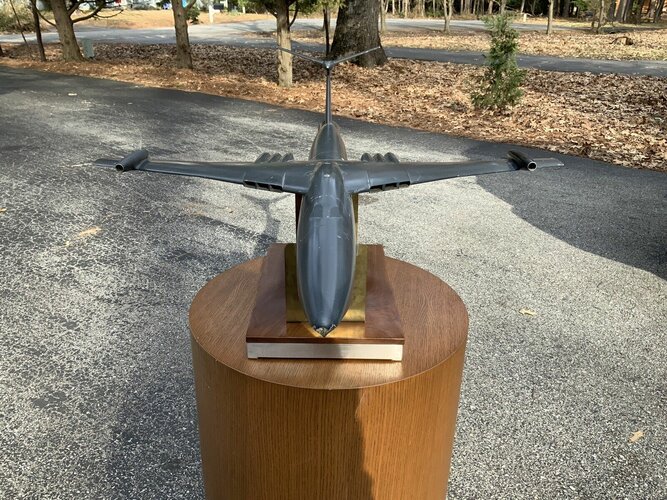
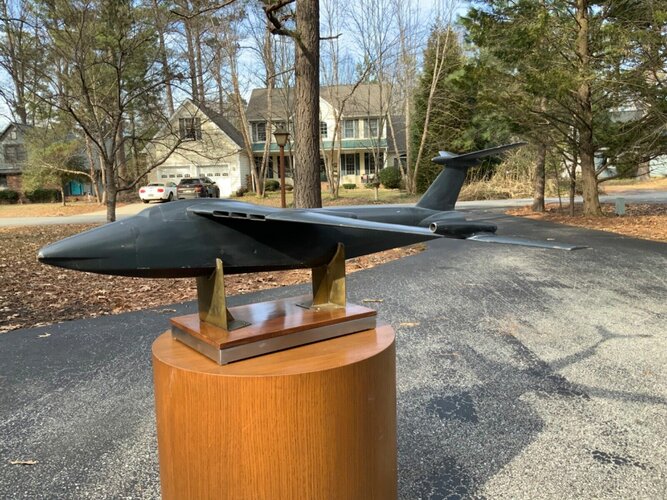
I took these pictures at the Pax River Museum many years ago. I assume it to be a permutation of the Sea Mistress or other Jet seaplanes.
